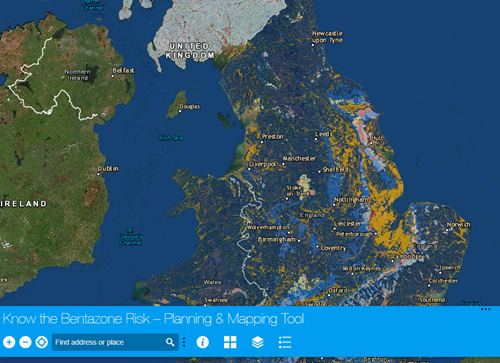Do you "Know the bentazone risk"?
06 April 2023
Growers using the post-emergence herbicide bentazone this spring are being urged to use an online tool to assess risk to water courses before applying the chemical.
Although the post-emergence herbicide bentazone is only used in minor crops such as peas and beans during April and May, it is causing contamination issues to water courses. Environment Agency data shows that bentazone is the most frequently detected approved pesticide in UK groundwater and is also increasingly being found in surface water. Bentazone is due for re-approval in 2025.
Last year BASF, NuFarm and Sharda CropChem developed a new mapping and planning tool to highlight and identify high risk areas. They launched this through a programme called "Know the bentazone risk" as part of a wider "Better Bentazone Together" stewardship programme. This spring, the VI in association with the other partners would urge growers to make use of the tool and the information on the website to help keep bentazone out of water courses. the VI's "Better Bentazone Together" page can be accessed here.
The mapping tool can be accessed here:
‘Better Bentazone Together’ shared the following guidance for application:
- Avoid high risk areas. You can download Magic Maps from Natural England or Check Zones from UK Gov which provide geographic information about the natural environment including the water courses, highlighting high risk areas; the Safeguard Zones and Source Protection Zones for bentazone.
- Keep chemistry on the surface. Bentazone will breakdown quickly where there is good light and oxygen so by keeping it on the surface you limit the chance of transfer whilst still protecting your crops. Avoid spraying if heavy rain is forecast in the following two days.
- Consider the weather. We know farming faces many pressures, but it is important to avoid spraying your crop on wet days or when there is water sitting in the field (fields with a shallow water table are to be avoided). The chemistry has high solubility and mobility so it will move into the water course or groundwater.
- No spray zone. Having a 6m buffer zone/5m no spray zone around the edges of the field, will help where there are high risk areas.
To find out more about “Know the Bentazone Risk” either on the BASF website or on the Nufarm website
View the VI's Bentazone Water Protection Advice Sheet (WPAS)
For more information on growing peas, beans and other pulse crops, please see the Processors and Growers Research Organisation (PGRO) website

